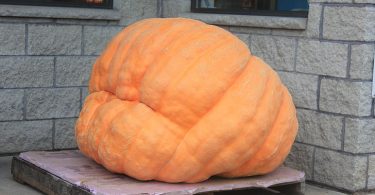Strawberries are an easy to grow fruit crop that will reward the home gardener with ample harvests for many years. With favorable conditions, each strawberry plant should produce one quart of strawberries.
Choosing Strawberry Plants
There are basically 3 types of strawberry plants to choose from: June bearing, Everbearing and Day Neutral.
June Bearing strawberries produce a single, large crop per yearduring a 2 – 3 week period in the spring. June bearers are the traditionally grown plants, producing a single flush of flowers and many runners. They are classified into early, mid-season and late varieties. The largest fruits are generally from June bearing varieties.Everbearing strawberries produce two to three harvests of fruit intermittently during the spring, summer and fall. Everbearing plants do not send out many runners.Day Neutral strawberries will produce fruit throughout the growing season. These strawberries also produce few runners. Everbearing and day neutral strawberries are great when space is limited, but the fruits are usually somewhat smaller than June bearers.
Site: Where to Plant Strawberries
Basic considerations when locating a strawberry patch include:
- Full sun
- Well drained, sandy loam with a pH from 5.8 to 6.2 is ideal
- Don’t plant where tomatoes, potatoes, peppers or eggplant have been grown recently (Verticillium Rot)
Planting Strawberry Plants
What ever planting method you choose, the following rules apply:
- Plant in the spring as soon as the soil is dry enough to be worked, or in late fall
- Be sure you have certified disease-free plants
- Select plants with large crowns with healthy, light-colored roots
- Amend soil with 1-2 inches of organic matter like compost or well- rotted manure
- Keep weeds from competing with your strawberry plants
- Make a hole large enough to spread the roots. Hill the center of the hole and place the crown at soil level. Spread the roots downward on the hill. Bury the plant so that the soil only goes halfway up the crown.
Matted Row System for June Bearing Strawberries
The matted row system works well with strawberry plants that send out a lot of runners. Set plants 18 inches apart in rows of 24 inches, with 4 – 4 1/2 feet between rows.Leaves and flower buds will emerge shortly after planting. Pinch off all flowers during the first year in the garden, on June bearing varieties, and all flowers that form until July 1st on ever-bearing and day neutral varieties. This will encourage both plant vigor and production of runners to fill in the mat. Pinching off this years flowers means no crop this year but a much better crop next year and several more years of production.As runners form from the plant crowns, train along the row and space 6 to 9 inches apart. Press the runner gently into the soil, hold in place with a rock or cover with about 1/2 inch of soil until roots form. Do not sever the runner from the mother plant.
Hill System for Day Neutral and Everbearing Strawberries
Day neutral and everbearing strawberry plants don’t send out many runners and instead focus their energy on producing multiple harvests. The hill system is basically a raised bed 8 inches high and 2 feet wide. Plants are set out in staggered double rows, about 12 inches apart. All runners should be removed as well as all flowers until July 1st of the first year. Plants may then be allowed to produce fruit. Multiple harvests are exhausting on plants and both day neutral and everbearing varieties should be replaced about every 3 years or whenever they seem to slow in vigor.
Mulching the Strawberry Bed
Mulch between plants after planting to keep the soil temperature cool, deter weeds and to keep the fruit off the soil. Straw is the traditional strawberry mulch. Do not use black plastic since it will raise the soil temperature and optimal fruit production requires cool soil.
In colder climates, mulching over the strawberry plants will prevent injury to the crowns. Wait until the temperature drops to 20 degrees F. and cover with several inches of straw or pine needles. Be sure to use a mulch that can be easily removed in the spring.
Strawberry Water Needs
1 – 2 inches of water per week is needed for juicy fruit. Water is especially important while the fruit is forming, from early bloom to the end of harvest.
Fertilizing Strawberries
Start with a rich, organic soil. Apply a balanced fertilizer (10-10-10) at planting at the rate of one pound per 100 sq. ft. Fertilize again after renovation of June bearers or second harvest of day neutrals and everbearing types. Do not over fertilizer or you will have excessive leaf growth and poor flowering. Do not fertilizer strawberries late in the season in colder climate to prevent new growth that will be damaged by frost.
Credit : http://gardening.about.com/od/fruitsberriesnuts/a/Strawberries.htm






